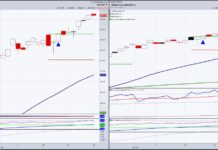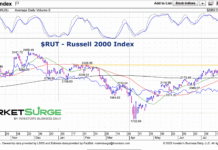When valuing a company, an analyst has several options for valuation tools. In this valuation series, we have considered the Asset Valuation method, Calculated Intangible Value and the P/E Method. There was also a brief digression to look at the Weighted Average Cost of Capital (WACC) calculation and the PEG Ratio. This time, we will look at the discounted cash flow method (DCF); theoretically speaking this is probably the best way in which to value a company.
As we know, if we discount the future cashflows of an entity we have a value for current shareholder wealth. To do this, we can estimate what the future annual post-tax cashflows will be and discount them with an appropriate cost of capital. Note that we will once again use Caterpillar, Inc (CAT) in our example.
Establishing the cashflows may not be a straightforward task and if possible we should use free cash flow. Free cash flow is what is left to distribute to shareholders after the company has sufficiently invested in non-current assets and working capital to ensure that it is able to continue operating. Post-tax cash flows may be used if the free cash flow cannot be identified. It is worth noting that if a company pays out all of its free cash flow as dividend, the discounted cash flow method will return the same value as the dividend value model valuation (DVM) (subject of my next article), if the free cash flows are expected to grow at a constant rate and this growth rate is also used in the DVM.
We mentioned that an appropriate cost of capital must be used to discount the cash flows, and in this instance, calculate the terminal value. If we use the cost of equity, this can be used on free cash flows (i.e. post-tax cash flows after financing charges) and this will give us the value of the equity in the company. If we use the WACC, this can be used to discount post-tax cashflows before financing charges and give us the debt plus equity value. You may then deduct the value of debt to arrive at the equity value. My preference is to use WACC and as we saw in a previous article, I calculated this to be 11.8% for CAT. For simplicity, we will round this up to 12%.
As mentioned above, it can be difficult to identify free cash flows but fortunately we have them for 2009 to 2013:
1. Source: Marketwatch – Caterpillar Free Cash Flow
From these figures, we can calculate the compounded annual growth rate, which removes the volatility in the cash flow:
(4√5.75/4.03)-1 = 9.2%
We have to treat this figure with some caution though. If we use 9.2% in perpetuity, we are in effect saying that CAT will grow at a faster pace than the overall economy for ever. Using historical figures is advisable, 3% is a reasonably cautious estimate:
2014 5.75 x 1.03 = 5.92
2015 5.92 x 1.03 = 6.1
2016 6.1 x 1.03 = 6.28
Alternatively, we could simply have calculated 5.75 x 1.033 = 6.28
Present Values (DCF 12%)
5.92 x 0.893 = 5.29
6.1 x 0.797 = 4.86
6.28 x 0.712 = 4.47
Present Value is 14.62bn
We then have to calculate the terminal value, which assumes that the growth rate and discount rate will remain constant.
Terminal Value (TV)
(6.28 x 1.03) / 12%-3%) = 71.87bn
We then discount this to get the present value:
Present Value of TV:
71.87 x (0.797) = 57.28
Add PV of cash flows and TV: 14.62bn + 57.28bn =71.9bn
At the 2013 year end, CAT had total debt of 37.75m, and cash and short term investments of 6m. We can then subtract 31.75m from our present value and arrive at 71.87bn
Outstanding shares: 605.4m
Value per share: $118.71
It is worth remembering though that there are some issues with this method of valuation as well. The most obvious are determining the future cash flows and an appropriate discount rate. In addition, what time period do we calculate in detail and are we sure about our terminal value calculation. Finally, the discounted cash flow method does not consider any future options which may arise and there is a major assumption that discount and tax rates are constant throughout the evaluation period.
Having said that, this method does give you a maximum value for the company and, crucially, it takes into account the time value of money. In my next article, the final in the valuation series, will look at the dividend valuation model.
Follow Allan on Twitter: @MillarAllan
No position in any of the mentioned securities at the time of publication. Any opinions expressed herein are solely those of the author, and do not in any way represent the views or opinions of any other person or entity.









